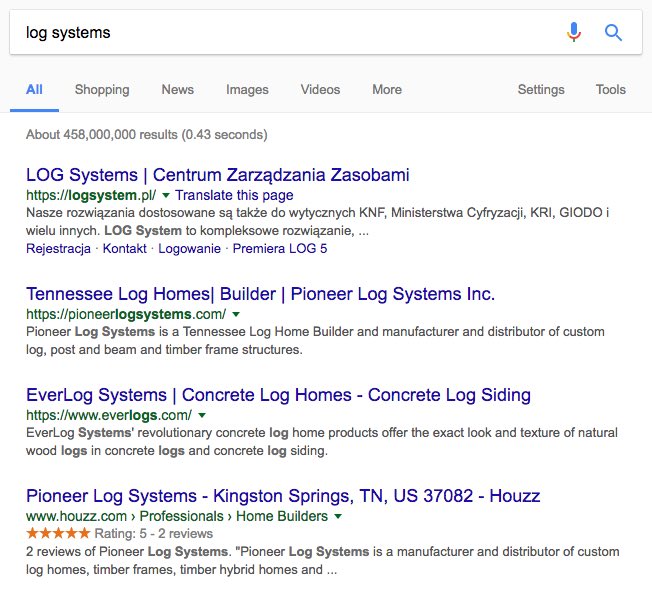50% of Search Queries are 4+ Words: How to Target Smarter Keywords
Half of all search queries are long-tail keywords. That means if your keyword/user intent strategy isn’t targeting these terms, you’re missing about half of your audience and half of your potential leads.
Long-tail keywords represent a strategic segment of your audience, potentially the more qualified 50%. They may also represent, depending on your industry, a huge SEO opportunity in the form of easier rankings. If your SEO keyword strategy doesn’t already include long-tail keywords, it’s time to get started.
When you’re ready to get more strategic about your keywords and drive better leads through organic traffic, scroll to the bottom of this post and get access to our exclusive long-tail keyword worksheet template.
What Are Long-Tail Keywords and Why Are They Important?
Long-tail keywords are search queries composed of four or more words.
Often, long-tail keywords are used by searchers who know exactly what they’re looking for: they’re either ready to make a purchase or seeking very specific information. Instead of searching for, “cloud hosting,” they’re searching, “cloud hosting price comparisons” or, “pros and cons cloud hosting.” Those are very different questions, but both are looking for very specific answers.
Long-tail keywords can also be easier to rank for. Because they are so specific, they get fewer searches. Low search volume, to the untrained or lazy SEO marketer, looks like a keyword that isn’t pursuing, and that means there’s generally less competition for organic search rankings.
Long-tail keywords, then, represent opportunities to more easily rank well in organic search, for a small but more qualified audience. That is exactly where you want your brand to be.
How to Find Relevant Long-Tail Keywords
The first step in incorporating long-tail keywords into your content strategy is compiling a list of prospective keywords to target. There are several sources that can be used to compile a list of relevant long-tail keywords:
- LSIGraph – The LSI (Latent Semantic Indexing) Keyword Generator is a simple tool that generates a list of keywords that are related (according to Google) to the broad keyword you provide. They’re not all long-tail keywords, but most of them qualify.
- Answer the Public – Answer the Public is another free tool that generates three (long) lists of potential long-tail keywords based on the broad term you provide, by attaching questions, prepositions, and letters to the term … and displays them very creatively.
- Google Auto-Suggest – When users type in queries, Google automatically tries to predict the remainder of the query. These predictions are based on real searches performed by users. Try typing some broad keywords into Google’s search bar to see if any long-tail keywords appear in the suggested results. Then, find additional long-tail keywords by performing subsequent searches for the suggested results:



- Moz Keyword Explorer – Typing a broad keyword into the Moz Keyword Explorer tool will result in a list of up to 1,000 related keywords. Perform two free searches each day, or pay for the premium version that allows for additional searches.
- Forums and Question Boards – Review the questions being asked on industry forms or question boards like Quora. Often, users of these systems ask questions because a general web search didn’t yield the answers they were looking for.
For most businesses, this exercise will result in hundreds of potentially relevant long-tail keywords. But not all keywords will be worth targeting, and not all will need individual pieces of content.
How to Prioritize a List of Long-Tail Keywords
To integrate long-tail keywords into your overall content strategy, you’ll need to first prioritize your list. To prioritize, look at relevancy, usage, and existing coverage:
- Find the monthly search volume for long-tail keywords using Moz Keyword Explorer. Phrases with higher search volumes might be more important to prioritize than those with “no data.”
- Identify low-volume keywords with little competition by conducting searches and reviewing the results. Even low-volume keywords can be high priority if there is little competition for top result placements. Keywords that signal a purchase intent and have little existing coverage may not drive significant traffic, but the traffic they do bring will be highly qualified and more likely to convert. Conversely, low-volume keywords that do not signal a purchase intent are definitely not a priority.
- Make sure the keyword is relevant by conducting user intent research. Conduct a search for the phrase and review the top results. If your tech company sells log management software, for example, you might be surprised to learn that organic search results for “log systems” have more to do with cabins than computers. Cross off the keywords with irrelevant search results.

- Focus on keywords with little competition to drive the most organic traffic. If ten long-tail keywords have top results from major publishers and ten have results from brands you’ve never heard of, prioritize the ten terms with less competition to increase the likelihood of earning a page-one result.
- Find top results that are shallow or could be improved and prioritize those keywords above others. By providing higher quality or more comprehensive coverage, you could overtake the top results.
Once all the long-tail keywords are prioritized, you can begin incorporating content that’s optimized for those keywords into your overall content strategy.
How to Target Long-Tail Keywords
While it may be tempting to simply write one piece of content for each long-tail keyword, doing so is unnecessary, creates a poor user experience, and is unlikely yield any results. Long-tail keywords are about creating thorough, topically authoritative content.
It starts with organizing your new list, and grouping long-tail keywords that are related:
- Semantic variations—Group together the keywords that essentially say the same thing, like “log management open source” and “open source log management.” Plurals and abbreviations are also essentially the same keyword.
- Related themes—Phrases like “what is cloud hosting,” “how does cloud hosting work,” and “benefits of cloud hosting,” are all very related. If you were having a conversation about one, you would discuss the others. Consider the who, what, where, when, why, and how of your topic.
- User intent overlap—If multiple keywords produce very similar organic search results, it’s probably because your audience is using them to find very similar results.
Additionally, look for long-tail keywords that are asking questions that only require short, simple answers. These may be good candidates for an FAQ or glossary page.

Download our long-tail keyword worksheet template below!
Each keyword family, then, becomes one piece of comprehensive content based on the main theme or the broad keyword that inspired the list. Individual long-tail keywords can help structure the content and define it for search engines. If you already have content targeting a broad keyword, improve it. If not, build something new.
- Long-tail Keywords for Structure—Start with the basic, broad term, and let the most popular and relevant long-tail keywords guide the structure of the content. Start by defining “cloud hosting,” for example, and answering the “what is” long-tail at the top to target any featured snippet opportunities. The first subsection might answer, “benefits of,” and the next might target, “how does it work.”
- Long-tail Keywords for Google—Once the content is created, make sure you used the actual long-tail keyword phrases in strategic parts of the content without keyword stuffing. Keyword use should always read naturally, but within that consideration, make sure the title of the benefits section, for example, actually wraps, “The Benefits of Cloud Hosting” in H2 tags.
Other important fields and locations include the top of the content or the keyword’s specific subsection, image titles and alt text, and anchor text.
When you’re done, you will have a comprehensive piece of content that is well on it’s way to ranking well for several long-tail keywords.
Long-Tail Keywords and Content Strategy
There are a number of benefits to including long-tail keyword research into an overall content strategy. Long-tail keywords can be targeted to increase organic traffic—which is good for business—and to answer specific questions that real users are asking—which is good for customers.
As a bonus, long-tail keyword research can help content marketers brainstorm new ideas. That means it’s great for overcoming writer’s block, and finding ways to make a content strategy more comprehensive.
Get started by researching long-tail keywords and compiling a list. Fill out the form below to get access to our custom long-tail keyword worksheet template to help keep track of everything. Once that’s complete, review the list to see if your research highlights any major gaps in existing coverage.
Download the Worksheet:
What's Next?
Profound Strategy is on a mission to help growth-minded marketers turn SEO back into a source of predictable, reliable, scalable business results.
Start winning in organic search and turn SEO into your most efficient marketing channel. Subscribe to updates and join the 6,000+ marketing executives and founders that are changing the way they do SEO:
And dig deeper with some of our best content, such as The CMO’s Guide to Modern SEO, Technical SEO: A Decision Maker’s Guide, and A Modern Framework for SEO Work that Matters.





